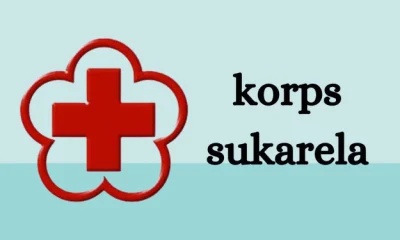HEALTH & FITNESS
Korps Sukarela: The Role and Importance of Volunteer Corps in Malaysia and Indonesia (2025 Guide)
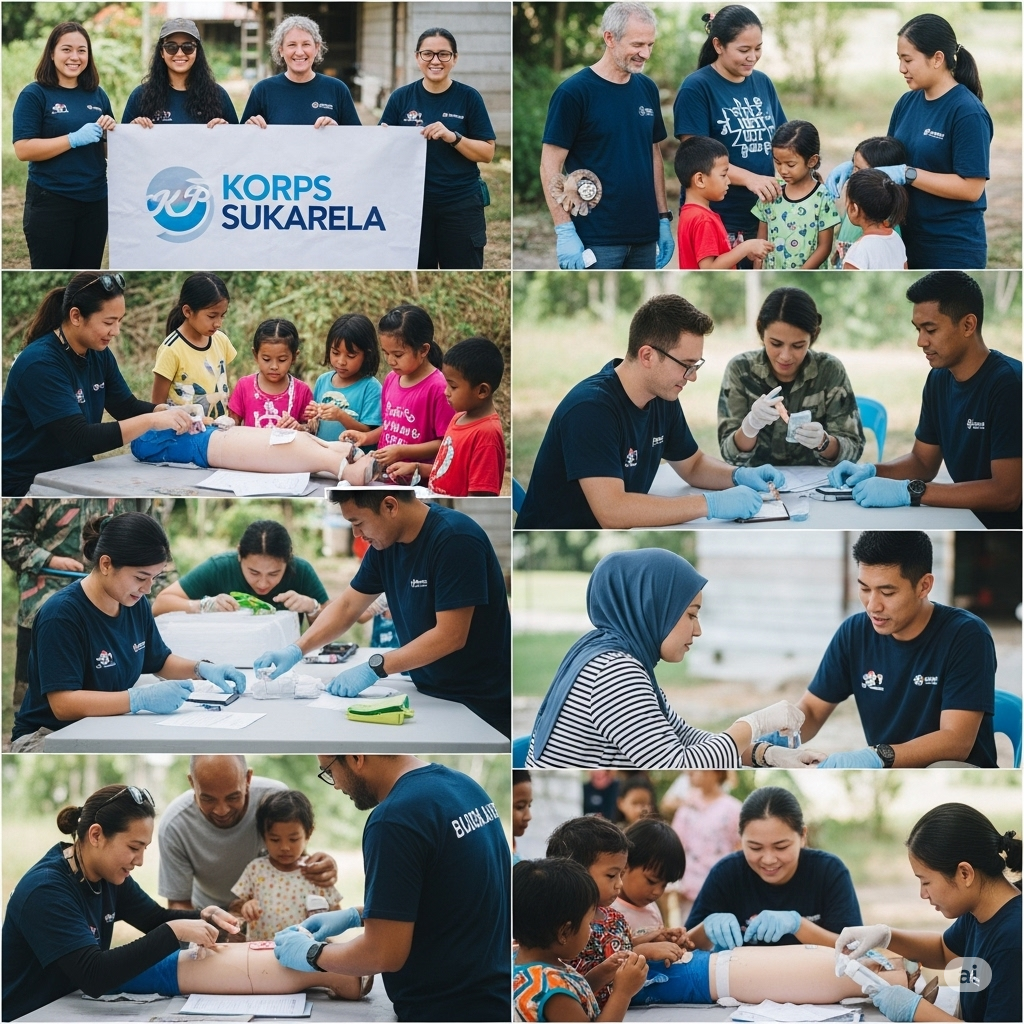
Introduction: What is Korps Sukarela?
“Korps Sukarela” is a term derived from the Malay/Indonesian language that translates to “Volunteer Corps” in English. It refers to a group or organization of individuals who offer their services voluntarily, without expecting payment or compensation, especially in times of crisis.
In Malaysia and Indonesia, the Korps Sukarela plays a crucial role in supporting communities during natural disasters, emergencies, and public service initiatives. Their presence is a reflection of strong communal values and a deeply rooted culture of helping one another.
Origin and History of Korps Sukarela
The concept of volunteer corps has existed in Southeast Asia for decades. Particularly in Malaysia and Indonesia, community-based volunteering has been an essential aspect of civil resilience.
-
In Malaysia, organized volunteer corps began to emerge more formally during the 20th century, with support from government agencies such as Jabatan Pertahanan Awam Malaysia (JPAM) and RELA.
-
In Indonesia, similar developments took place, with the formation of groups under Badan Nasional Penanggulangan Bencana (BNPB) and social service wings.
These corps were primarily created to support disaster response, public safety, and community development efforts.
Roles and Responsibilities of Korps Sukarela
Korps Sukarela volunteers are typically the first on the scene during local emergencies. Their primary responsibilities include:
-
Disaster Relief: Assisting during floods, landslides, earthquakes, and fires.
-
Search and Rescue (SAR): Supporting emergency services in locating and rescuing victims.
-
Medical First Aid: Providing immediate care before professional help arrives.
-
Public Awareness Campaigns: Educating local populations on disaster preparedness, hygiene, and health.
-
Community Events and Security: Assisting in crowd control, local festivals, and safety patrols.
Their ability to mobilize quickly and operate effectively in local areas makes them an invaluable asset to any community.
Eligibility and Volunteer Training
Joining the Korps Sukarela usually requires meeting some basic requirements:
-
Age: Typically 18 years or older.
-
Health: Physically and mentally fit for emergency activities.
-
Discipline: Must be willing to follow protocol and take part in regular drills.
-
Commitment: A genuine desire to serve the community.
Training Includes:
-
CPR and First Aid
-
Firefighting Basics
-
Emergency Evacuation Techniques
-
Search and Rescue Operations
-
Crowd Management
Most volunteers undergo a short training course conducted by certified professionals, ensuring they are equipped to handle real-world challenges.
Why Korps Sukarela Matters in 2025
In an era marked by increasing climate-related disasters, Korps Sukarela continues to be a critical front-line defense. Their importance in 2025 can be summed up in the following ways:
-
Rapid Local Response
Volunteers are part of the community, making them faster to respond than distant authorities. -
Bridging Government Gaps
Where public resources fall short, volunteer corps fill the void with manpower and dedication. -
Cost-Effective Assistance
As unpaid labor, they help reduce the financial burden of disaster relief efforts. -
Mental and Emotional Support
Volunteers often provide the human touch in moments of crisis, comforting victims and boosting morale. -
Tech-Savvy Evolution
Korps Sukarela now uses apps, GPS tracking, and drones to enhance efficiency in field operations.
Major Volunteer Corps Organizations
In Malaysia:
-
RELA (People’s Volunteer Corps)
Known for supporting public security and safety during events and emergencies. -
APM (Civil Defence Force)
A government-backed volunteer service for disaster management.
In Indonesia:
-
Tagana (Disaster Preparedness Cadets)
Specialized in social disaster response and trained by the Ministry of Social Affairs. -
Palang Merah Indonesia (Indonesian Red Cross)
Focused on blood donations, first aid, and humanitarian support.
These organizations often work in coordination with the police, fire departments, and healthcare institutions.
How is Korps Sukarela Different from NGOs?
| Feature | Korps Sukarela | NGOs |
|---|---|---|
| Structure | Often semi-government | Independent or donor-funded |
| Volunteer Base | Community-oriented | Broad, often international |
| Scope | Disaster, emergency, local support | Education, healthcare, advocacy |
| Compensation | Unpaid volunteers | May include paid staff |
While NGOs focus on broader social issues, Korps Sukarela is more hands-on with immediate crisis response.
Modern-Day Role in 2025: Technology and Digital Support
In 2025, Korps Sukarela has embraced technology to modernize its operations:
-
Mobile Apps: Volunteers and civilians can receive real-time alerts and updates.
-
Drones: Used for aerial surveillance in disaster zones.
-
Online Training Modules: Allow volunteers to upskill remotely.
-
Crowdsourced Mapping: Helps identify affected areas quickly and coordinate resources.
This digital transformation has enabled faster response times and improved safety protocols.
How to Join Korps Sukarela?
For residents of Malaysia or Indonesia interested in volunteering, here’s how to get started:
-
Locate a local volunteer agency or disaster management office.
-
Register through an official website or visit in person.
-
Attend a training session and pass basic assessments.
-
Receive certification and join field operations.
Some international NGOs and embassies also coordinate with these corps for training and collaboration.
Real-Life Example: 2024 Johor Floods (Malaysia)
During the devastating floods in Johor, Malaysia, in late 2024, over 1,500 Korps Sukarela members were deployed within hours. They rescued stranded families, delivered food and water, and coordinated with rescue helicopters using real-time GPS mapping. Their actions saved countless lives and restored order in affected zones long before national aid could fully mobilize.
Benefits of Being a Volunteer
-
Skill Development: Learn first aid, leadership, and crisis management.
-
Networking: Meet like-minded individuals passionate about service.
-
Personal Growth: Boosts empathy, discipline, and resilience.
-
Recognition: Government certificates and public awards for active volunteers.
Many volunteers eventually pursue careers in emergency services, public health, or social work thanks to the experience gained.
Conclusion: Why Every Nation Needs a Korps Sukarela
In a world increasingly prone to crises — both natural and man-made — community-based volunteer corps like Korps Sukarela offer a blueprint for resilience, compassion, and unity. They not only fill the gaps left by formal institutions but also nurture a spirit of togetherness that no government program alone can achieve.
In 2025 and beyond, as global challenges intensify, the model of Korps Sukarela should be studied and adapted worldwide — not just in Southeast Asia, but wherever people seek to rise above adversity with courage and care.
HEALTH & FITNESS
How Many Miles is 10,000 Steps? A Complete Guide
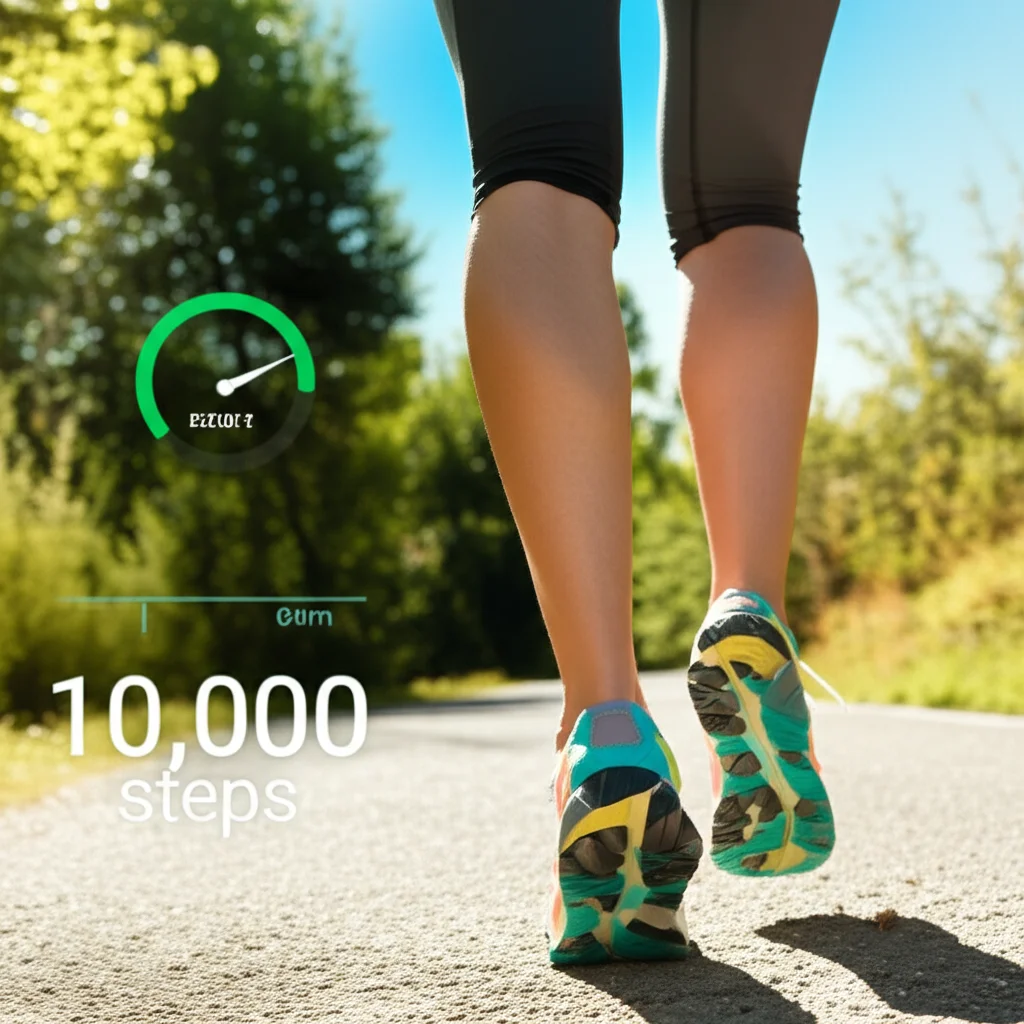
Walking is one of the most effective and accessible forms of exercise. Many of us track our daily steps through fitness apps, smartwatches, or pedometers, and the “10,000 steps a day” goal has become a popular benchmark for staying active. But have you ever wondered: how many miles is 10,000 steps?
The short answer:
On average, 10,000 steps equals about 4 to 5 miles (6.4–8 km).
However, the exact distance depends on several factors such as your height, gender, stride length, and walking pace. Let’s break this down so you can better understand how your daily step count translates into miles.
Understanding Step Length and Stride
The main factor that determines how many miles your steps cover is stride length.
- Step Length: The distance from the heel of one foot to the heel of the other foot when you take a step.
- Stride Length: Two steps combined (left + right).
For most adults:
- The average step length is about 2.1 to 2.5 feet.
- That means 2,000 steps roughly equals 1 mile.
So, if we apply this average:
- 10,000 steps ÷ 2,000 steps per mile = 5 miles.
But let’s look a little deeper, because everyone’s body is different.
Factors That Influence How Many Miles 10,000 Steps Equal
1. Height and Leg Length
Taller people generally have a longer stride, which means they cover more distance with fewer steps.
- A tall person may walk 10,000 steps ≈ 5.2 miles.
- A shorter person may walk 10,000 steps ≈ 4.5 miles.
2. Gender
Studies show that, on average, men tend to have longer strides than women:
- Men’s average stride = ~2.5 feet.
- Women’s average stride = ~2.2 feet.
This means men may walk slightly farther than women when both take 10,000 steps.
3. Walking vs. Running
The intensity also matters:
- Walking: 10,000 steps ≈ 4.5 – 5 miles.
- Running (longer strides): 10,000 steps could equal 6–7 miles depending on pace.
4. Pace
When walking faster, step length often increases slightly, so you cover more ground per step. A brisk walk can add a few extra tenths of a mile compared to leisurely strolling.
How to Estimate Your Own Step-to-Mile Conversion
If you want to know more accurately how far your 10,000 steps really take you, here are some simple ways:
Related Posts
Heaven Patches Reviews: Best Pain Relief Patches
HEALTH & FITNESS
The Comfort Crisis: Why Discomfort Might Be the Cure for Modern Life
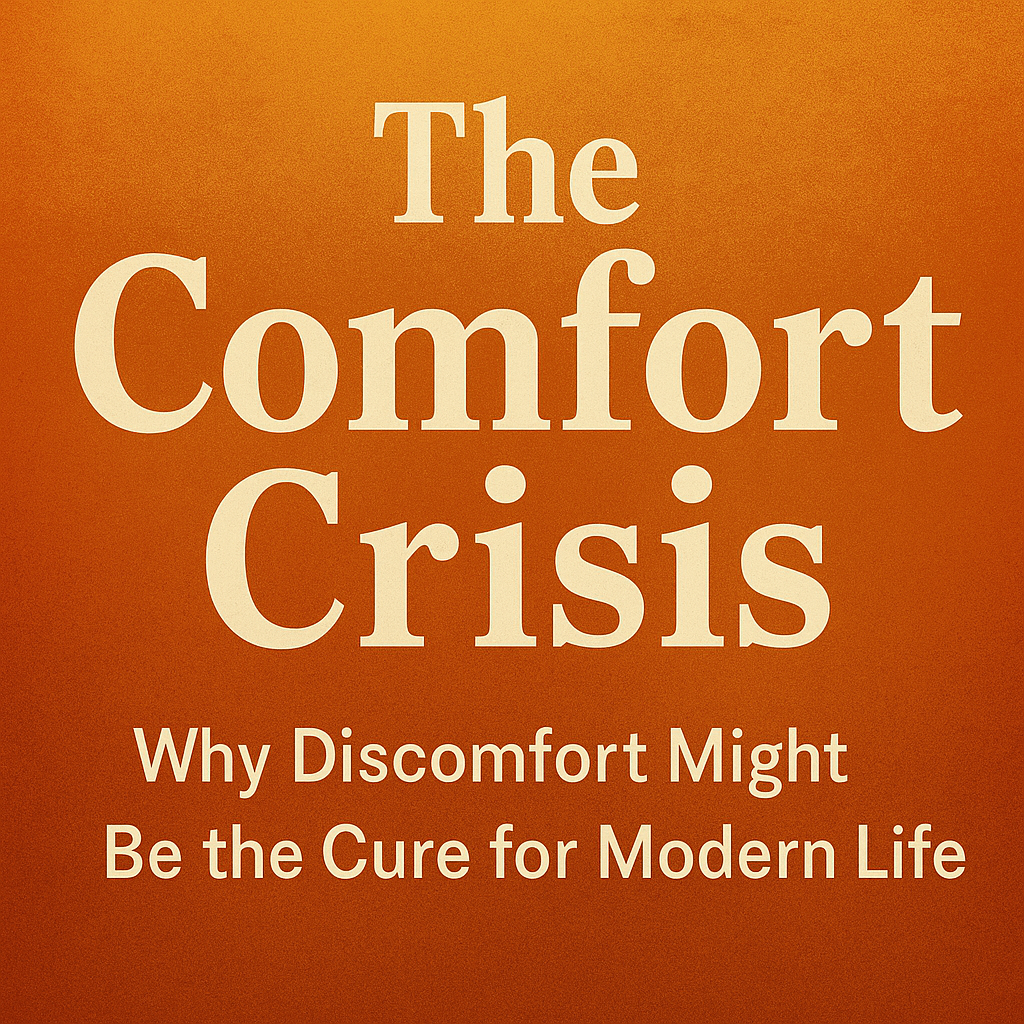
🌟 Introduction
We live in the most comfortable time in human history. With smart homes, food delivery apps, ergonomic chairs, and endless digital entertainment, discomfort has become optional. But is this abundance of ease really helping us?
That’s the question Michael Easter explored in his bestselling book “The Comfort Crisis”. The concept challenges the modern norm of avoiding struggle and argues that voluntary discomfort can unlock greater mental strength, happiness, and health.
Let’s dive deep into what the comfort crisis is, why it matters in 2025, and how you can benefit from embracing a little hardship.
❓ What is the Comfort Crisis?
The Comfort Crisis refers to the modern phenomenon where people are so surrounded by comfort that it’s making them physically weaker, mentally duller, and emotionally less resilient.
According to Easter, humans evolved in challenging environments, where discomfort was constant — hunger, cold, physical labor. But in today’s world, we’ve engineered those challenges away, creating a life so convenient that it’s causing long-term damage.
“Comfort is killing us,” Easter writes. “To grow, we need to get uncomfortable.”
📚 Origins of the Concept
Michael Easter, a journalist and professor, coined the term in his 2021 book. He embedded himself in extreme experiences — including a 33-day Arctic hunting trip — to uncover how adversity sharpens the mind and strengthens the body.
He draws on:
-
Neuroscience 🧠
-
Anthropology 🌍
-
Psychology 📘
-
Personal challenges 🏔️
The result is a compelling argument that modern comfort might be the root of our anxiety, obesity, and loss of purpose.
🚨 The Downsides of Too Much Comfort
1. Mental Health Decline
-
Constant entertainment prevents stillness and reflection.
-
Avoidance of difficulty leads to anxiety and low self-esteem.
2. Physical Deterioration
-
Sedentary lifestyles weaken muscles and increase chronic illnesses.
-
Easy access to calories encourages overeating.
3. Loss of Resilience
-
Comfort makes us fragile.
-
Fewer real challenges = fewer coping mechanisms.
🧗 How Discomfort Builds Strength
✅ Discomfort Triggers Growth
-
Cold showers improve discipline.
-
Fasting enhances metabolic flexibility.
-
Physical exertion boosts mental clarity.
✅ Psychological Resilience
-
Facing fears reduces anxiety.
-
Embracing boredom increases focus.
✅ Emotional Fulfillment
-
Difficult accomplishments (like hiking a mountain or finishing a marathon) bring lasting joy — not momentary pleasure.
“Happiness comes from solving problems, not avoiding them.”
🔧 Ways to Embrace Productive Discomfort
-
Take Cold Showers 🧊
-
Exercise Beyond Your Limit 💪
-
Digital Detox for 24-48 Hours 📵
-
Do One Thing That Scares You Weekly 😨
-
Try Fasting or Skipping a Meal 🍽️
-
Sleep Without A/C or Heat Occasionally 🛌
-
Take the Stairs, Walk More 🚶♂️
Start small, and let it grow. Voluntary discomfort builds capacity — physically and mentally.
🌎 Why the Comfort Crisis Matters in 2025
As tech evolves, the temptation to never be uncomfortable grows stronger:
-
AI automates thinking
-
VR replaces outdoor activity
-
Delivery services erase effort
If we don’t act now, the next generation may lose vital survival skills, emotional strength, and human connection. The Comfort Crisis is not just about individual health — it’s a cultural and generational warning.
🧠 Final Thoughts
The Comfort Crisis is a wake-up call. Life begins at the edge of your comfort zone. If you want to grow — mentally, physically, emotionally — you need to seek challenge, not comfort.
In 2025, true freedom may lie not in more ease, but in voluntary struggle.
❓FAQ: The Comfort Crisis
Q1: Who wrote The Comfort Crisis?
Michael Easter, journalist and professor at UNLV.
Q2: Is the Comfort Crisis just about physical discomfort?
No, it includes mental, emotional, and spiritual discomfort too.
Q3: How can I safely embrace discomfort?
Start small — cold showers, exercise, digital detox — and expand gradually.
Q4: Is this concept backed by science?
Yes, Easter references neuroscience, anthropology, and psychology research.
Q5: Can discomfort really improve happiness?
Yes — long-term happiness is often the result of overcoming meaningful challenges.
👉 For more personal growth and wellness articles, visit SpaceCoastDaily.co.uk
HEALTH & FITNESS
Understanding HRT Therapy: Benefits, Risks, and What to Expect
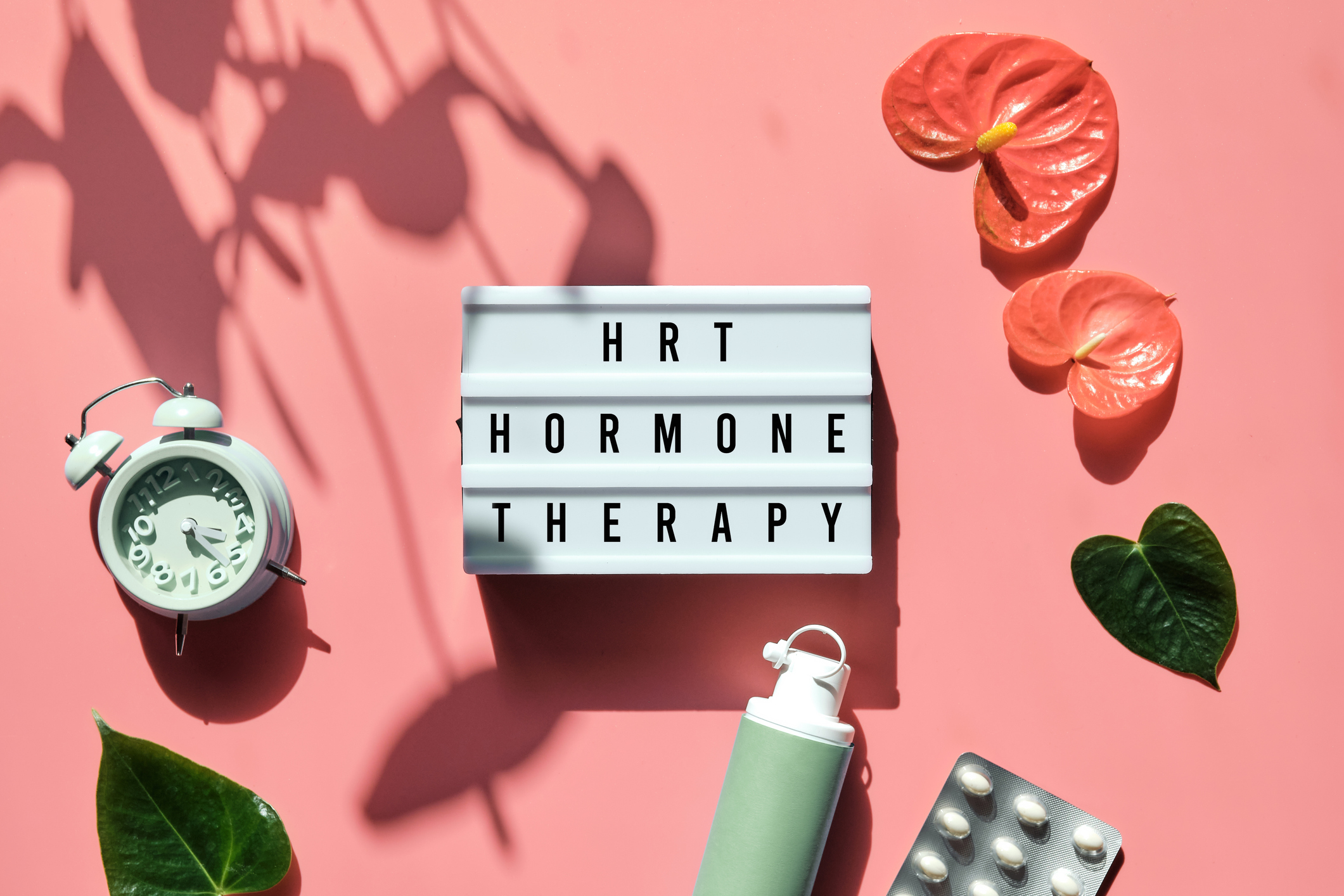
Hormone Replacement Therapy (HRT) has become an increasingly popular option for individuals experiencing hormonal imbalances, particularly during menopause. By restoring hormone levels to their natural balance, HRT can alleviate many of the uncomfortable symptoms associated with aging and hormonal decline. If you’re considering this treatment, it’s crucial to understand how it works, who it benefits most, and what potential risks may be involved. Many women have found relief and renewed vitality through HRT therapy, especially when guided by professionals who specialize in personalized wellness plans.
What Is HRT Therapy?
Hormone Replacement Therapy involves supplementing the body with hormones that are no longer being produced in adequate amounts. Most commonly, HRT is used to treat symptoms of menopause in women, such as hot flashes, night sweats, mood swings, and vaginal dryness. The therapy can also help prevent osteoporosis, a condition that causes bones to become weak and brittle.
There are different types of HRT:
- Estrogen-only therapy – generally prescribed for women who have had a hysterectomy.
- Combination therapy – includes both estrogen and progesterone, typically for women who still have a uterus.
- Bioidentical hormone therapy – uses plant-derived hormones that are chemically identical to those the human body produces.
The choice of therapy often depends on individual health needs, medical history, and the severity of symptoms.
Who Can Benefit from HRT?
While HRT is primarily associated with menopausal women, it can be beneficial for a range of individuals experiencing hormonal deficiencies. Some of the most common candidates include:
- Perimenopausal and menopausal women: To reduce symptoms like mood swings, sleep disturbances, and hot flashes.
- Women with premature menopause or ovarian insufficiency: To prevent long-term health risks such as heart disease and bone loss.
- Men with low testosterone levels: Often called testosterone replacement therapy (TRT), this is a form of HRT used in men to treat fatigue, decreased libido, and muscle loss.
It’s important to consult with a qualified healthcare provider who can perform the necessary hormone level testing and customize a treatment plan that fits your specific needs.
Key Benefits of HRT Therapy
The advantages of undergoing HRT can be life-changing for many people. These benefits often include:
1. Symptom Relief
The most immediate benefit is a significant reduction in menopausal symptoms such as night sweats, hot flashes, and mood instability. This can improve overall quality of life and mental health.
2. Bone Health
Estrogen plays a critical role in maintaining bone density. HRT can reduce the risk of fractures and osteoporosis in postmenopausal women.
3. Heart Health
There is evidence suggesting that starting HRT around the onset of menopause may reduce the risk of heart disease. However, the relationship between HRT and cardiovascular health is complex and should be evaluated individually.
4. Cognitive Function
Some studies suggest HRT may help maintain cognitive functions and reduce the risk of neurodegenerative diseases such as Alzheimer’s when started early in menopause.
Are There Any Risks?
Like all medical treatments, HRT comes with potential risks, particularly when used long-term or without proper medical oversight. Possible risks include:
- Increased risk of blood clots and stroke
- Elevated risk of certain types of cancer (e.g., breast and endometrial cancer)
- Gallbladder disease
- Mood changes or depression
However, these risks can often be mitigated with personalized treatment plans, careful monitoring, and using the lowest effective dose for the shortest time necessary.
Getting Started with HRT
Before beginning HRT, it’s essential to undergo comprehensive hormone testing and discuss your medical history with a knowledgeable practitioner. You’ll want to choose a clinic that focuses on personalized care, ongoing monitoring, and holistic wellness. Clinics like Results Medical Aesthetics specialize in crafting individualized treatment protocols that prioritize safety, effectiveness, and overall well-being.
Treatment may involve regular consultations, follow-up lab work, and adjustments to dosage or hormone type depending on how your body responds. In many cases, patients begin to feel the positive effects of HRT within a few weeks.
Final Thoughts
Hormone Replacement Therapy can be a transformative option for those dealing with the symptoms of hormonal imbalance. While it’s not a one-size-fits-all solution, modern advances in testing and bioidentical hormones have made it safer and more customizable than ever. Whether you’re navigating menopause or another hormonal challenge, HRT may offer the relief and rejuvenation you need to reclaim your quality of life.
Always consult with a trusted medical provider to determine whether HRT is right for you and to ensure your treatment plan is safe and tailored to your unique needs.
Also Read: Best Home Remedies for Headache – Natural Relief Without Medicine for more simple tips to stay healthy at home.

